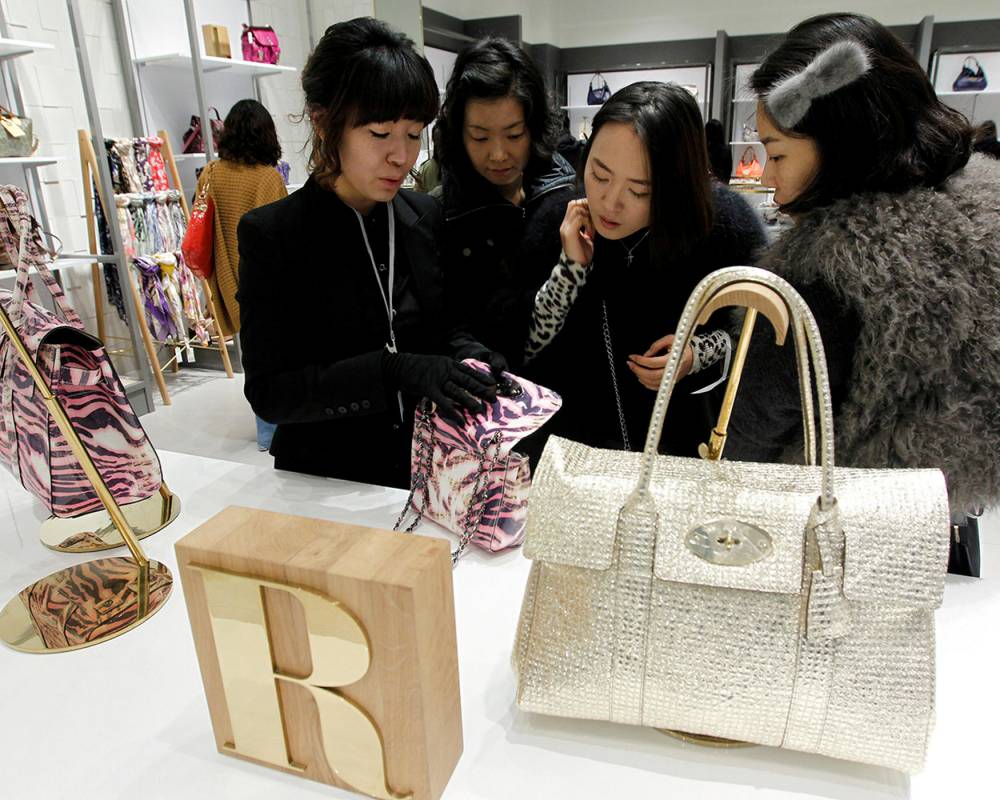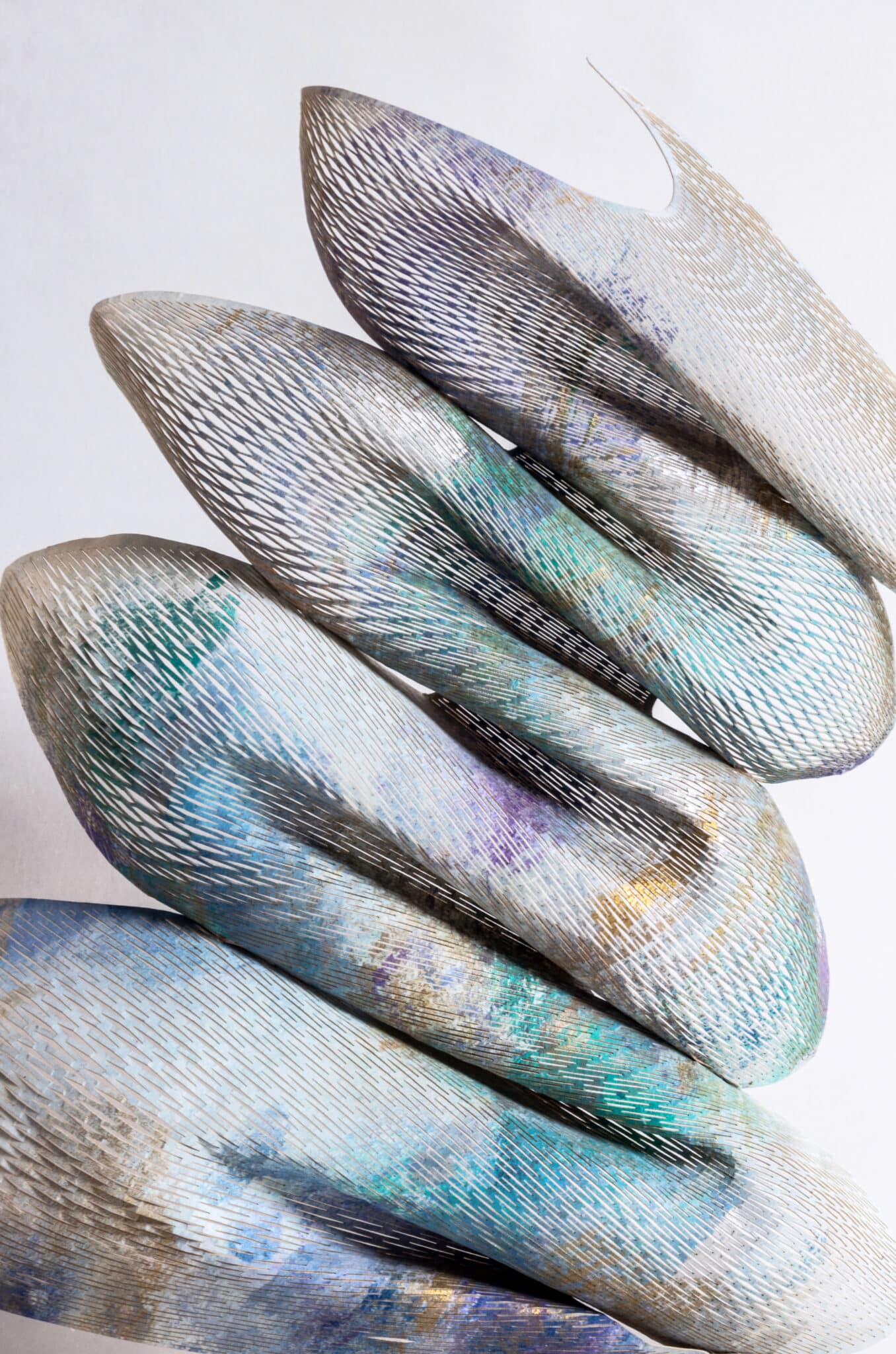[vc_row njt-role=”people-in-the-roles” njt-role-user-roles=”administrator,editor,author,armember”][vc_column][vc_column_text]
Asian countries have long been major consumers of luxury goods. But the one that leads in terms of spending is South Korea. As a result, South Koreans’ spending on luxury goods increased by about 24% in 2022, reaching $16.8 billion, or $325 per capita.
According to analysts from the US bank Morgan Stanley, who looked at global spending on luxury goods, South Koreans stand out as the world’s biggest spenders on products per capita. This buoyant demand for luxury goods is explained both by an increase in their purchasing power and by the desire to display social status.
The investment bank estimated that the country’s total spending on personal luxury goods increased by 24% in 2022 to $16.8 billion, or $325 per capita. That’s far more than the $55 and $280 per capita spent by Chinese and American nationals.
This luxury craze is more than beneficial for brands. Moncler said its revenue in South Korea more than doubled in the second quarter of 2022 compared to 2020. And for the Richemont Group, which owns Cartier and Van Cleef & Arpels, among others, the Southeast Asian country is among the regions with a significant sales increase in 2022.
Luxury = financial success?
This strong demand for luxury goods among Koreans can be explained by their desire to show that they are worth something through their appearance and material possessions: “Appearance and financial success may resonate more with consumers in South Korea than in most other countries,” explain Morgan Stanley analysts.
Flaunting wealth is more socially acceptable in South Korea than in many other countries. A McKinsey survey found that only 22 percent of Koreans surveyed consider showing off luxury goods to be ostentatious, compared with 45 percent of Japanese and 38 percent of Chinese.
Demand for luxury goods is also being supported by rising household wealth. Data from the Bank of Korea shows that the country’s household net worth increased by 11% in 2021.
Another factor to consider is that luxury Houses have been using Korean icons to further catalyze demand. Actor Lee Min has become the face of Fendi, rapper G-Dragon lends his face to Chanel and the leader of the group BlackPink appears on the Dior campaign for the HardWear collection. “Well received” according to the fashion house, the latter initiative doubled sales of the line.
But even when the numbers are very good in a country, both for the Houses and for its economy, Bain & Company, an international consulting firm, warns against using per capita measures for luxury goods consumption: “Luxury, by definition, is not a mass product,” a Bain & Co. partner tells CNBC, the U.S. business channel. “I would suggest that pro-rating total luxury spending by the number of people in the middle class and above would be a more meaningful measure to reflect the attitude and consumption toward luxury,” he says.
Luxury at a price
2023 marks the “return to normal” for luxury brands, with growth highly anticipated. In Asia, the brands are betting heavily on the various countries where luxury is a regular part of consumption. China, which according to financial experts will become the largest market in the sector by 2025, has seen a considerable increase in prices in prestige brand stores. This is also the case for South Korea, where companies such as Hermès and Rolex have decided to increase their prices in early 2023.
Hermès has increased the prices of its products by 5 to 10%. For example, the price tag of the Garden Party 36 model has increased by 7.8% from 4.98 million won to 5.37 million won.
At luxury watchmaker Rolex, some watches have become more expensive, such as the Rolex Submariner No date which now costs 11.69 million won (+2.4%).
Other luxury brands may follow suit. Last year, Chanel raised its prices several times every few months, as did Louis Vuitton.
Read also >Chinese tourism recovery: what opportunities for luxury?
Featured photo : ©Press[/vc_column_text][/vc_column][/vc_row][vc_row njt-role=”not-logged-in”][vc_column][vc_column_text]
Asian countries have long been major consumers of luxury goods. But the one that leads in terms of spending is South Korea. As a result, South Koreans’ spending on luxury goods increased by about 24% in 2022, reaching $16.8 billion, or $325 per capita.
According to analysts from the US bank Morgan Stanley, who looked at global spending on luxury goods, South Koreans stand out as the world’s biggest spenders on products per capita. This buoyant demand for luxury goods is explained both by an increase in their purchasing power and by the desire to display social status.
The investment bank estimated that the country’s total spending on personal luxury goods increased by 24% in 2022 to $16.8 billion, or $325 per capita. That’s far more than the $55 and $280 per capita spent by Chinese and American nationals.
This luxury craze is more than beneficial for brands. Moncler said its revenue in South Korea more than doubled in the second quarter of 2022 compared to 2020. And for the Richemont Group, which owns Cartier and Van Cleef & Arpels, among others, the Southeast Asian country is among the regions with a significant sales increase in 2022.
Luxury = financial success?
[…][/vc_column_text][vc_cta h2=”This article is reserved for subscribers.” h2_font_container=”tag:h2|font_size:16|text_align:left” h2_use_theme_fonts=”yes” h4=”Subscribe now !” h4_font_container=”tag:h2|font_size:32|text_align:left|line_height:bas” h4_use_theme_fonts=”yes” txt_align=”center” color=”black” add_button=”right” btn_title=”I SUBSCRIBE !” btn_color=”danger” btn_size=”lg” btn_align=”center” use_custom_fonts_h2=”true” use_custom_fonts_h4=”true” btn_button_block=”true” btn_custom_onclick=”true” btn_link=”url:https%3A%2F%2Ftest2023.luxus-plus.com%2Fen%2Fsubscriptions-and-newsletter-special-offer-valid-until-september-30-2020-2-2%2F”]Get unlimited access to all articles and live a new reading experience, preview contents, exclusive newsletters…
Already have an account ? Please log in.[/vc_cta][vc_column_text]Featured photo : © Press[/vc_column_text][/vc_column][/vc_row][vc_row njt-role=”people-in-the-roles” njt-role-user-roles=”subscriber,customer”][vc_column][vc_column_text]
Asian countries have long been major consumers of luxury goods. But the one that leads in terms of spending is South Korea. As a result, South Koreans’ spending on luxury goods increased by about 24% in 2022, reaching $16.8 billion, or $325 per capita.
According to analysts from the US bank Morgan Stanley, who looked at global spending on luxury goods, South Koreans stand out as the world’s biggest spenders on products per capita. This buoyant demand for luxury goods is explained both by an increase in their purchasing power and by the desire to display social status.
The investment bank estimated that the country’s total spending on personal luxury goods increased by 24% in 2022 to $16.8 billion, or $325 per capita. That’s far more than the $55 and $280 per capita spent by Chinese and American nationals.
This luxury craze is more than beneficial for brands. Moncler said its revenue in South Korea more than doubled in the second quarter of 2022 compared to 2020. And for the Richemont Group, which owns Cartier and Van Cleef & Arpels, among others, the Southeast Asian country is among the regions with a significant sales increase in 2022.
Luxury = financial success?
[…][/vc_column_text][vc_cta h2=”This article is reserved for subscribers.” h2_font_container=”tag:h2|font_size:16|text_align:left” h2_use_theme_fonts=”yes” h4=”Subscribe now !” h4_font_container=”tag:h2|font_size:32|text_align:left|line_height:bas” h4_use_theme_fonts=”yes” txt_align=”center” color=”black” add_button=”right” btn_title=”I SUBSCRIBE !” btn_color=”danger” btn_size=”lg” btn_align=”center” use_custom_fonts_h2=”true” use_custom_fonts_h4=”true” btn_button_block=”true” btn_custom_onclick=”true” btn_link=”url:https%3A%2F%2Ftest2023.luxus-plus.com%2Fen%2Fsubscriptions-and-newsletter-special-offer-valid-until-september-30-2020-2-2%2F”]Get unlimited access to all articles and live a new reading experience, preview contents, exclusive newsletters…
Already have an account ? Please log in.[/vc_cta][vc_column_text]Featured photo : © Press[/vc_column_text][/vc_column][/vc_row][vc_row njt-role=”people-in-the-roles” njt-role-user-roles=”subscriber,customer”][vc_column][vc_column_text]








